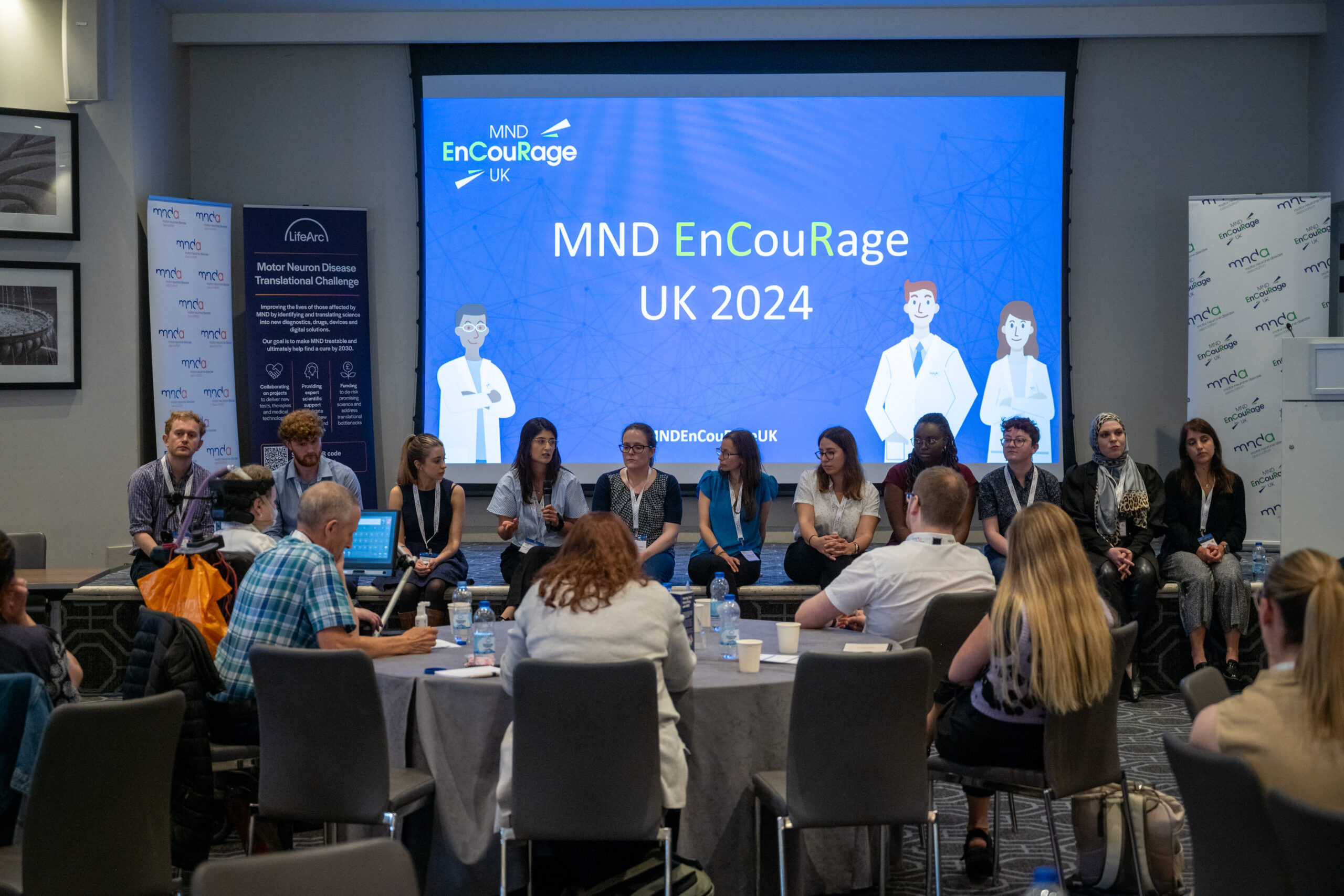Researchers at King’s College London led by Professor Christopher Shaw, are the first in Europe to embark on a clinical trial targeting a specific genetic form of ALS caused by mutations in the fused in sarcoma (FUS) gene.
What is FUS-ALS?
Mutations in FUS were first linked to ALS in 2009 by research led by Professor Christopher Shaw at King’s College London and Professor Robert Brown at University of Massachusetts. FUS mutations account for approximately 1-2% of all ALS cases. Whilst it is a very rare form of ALS, it is the most common cause of ALS in childhood and early adulthood when it typically presents with fast progression rates and a more aggressive disease course.
FUS is an important protein involved in several aspects of RNA metabolism and DNA repair. It is structurally and functionally similar to other RNA-binding proteins that are implicated in ALS, such as TDP-43. Mutations in the gene lead to abnormal FUS protein which mislocalises from the nucleus to the cytoplasm, forming toxic clumps. Evidence suggests that the abnormal FUS has a toxic gain-of-function in ALS, meaning that it gains extra functions which are toxic to the cells. This is thought to be the driving force behind the disease in FUS-ALS. Consequently, suppressing FUS gene expression, which would reduce the amount of abnormal FUS protein, may help alleviate toxicity and reduce neuronal damage.
Targeting the FUS gene
A new drug designed to target mutations in the FUS gene, called ION363, is currently being investigated. ION363 is a short single-stranded DNA molecule known as an antisense oligonucleotide (ASO). It is designed to specifically bind to and degrade RNA arising from the FUS gene, thereby reducing the level of FUS protein. The ASO is delivered to patients by direct injection into the fluid that surrounds the brain and spinal cord through a procedure known as a lumbar puncture. It is hoped this approach may delay or halt disease progression in patients with FUS-ALS. ASOs are currently licensed to treat other neurodegenerative conditions such as spinal muscular atrophy, and similar clinical trials are underway for other mutations known to cause ALS in genes such as SOD1 (Tofersen), C9orf72 (BIIB078, WVE-004), and ATXN2 (BIIB105).
The therapeutic potential of ION363 is supported by a recently published study which showed marked reduction in FUS protein throughout the central nervous system in a mouse model, following administration of ION363. This reduction in FUS protein helped to preserve surviving, vulnerable motor neurons from the burden of FUS aggregation.
The study also went on to dose a single participant with FUS-ALS, based on compassionate use, with ION363. This participant was Jaci Hermstad, who’s identical twin sister had died years earlier from the disease. Unfortunately, Jaci’s disease was already very advanced when she started receiving ION363 and she sadly died a year later. However, examination of Jaci’s brain tissue, with permission from Jaci and the Hermstad family, showed that FUS was reduced to nearly undetectable levels, effectively silencing FUS, just like in the mouse models. Additionally, the number of FUS clumps in the cytoplasm of motor neurones, a hallmark of FUS-ALS, was also reduced. Although it was not possible to determine if silencing of FUS had any effect on the course of the disease in this single case, it provides preliminary evidence in support of gene silencing as a promising therapeutic strategy in FUS-ALS.
A new Phase 3 clinical trial
A clinical trial led by Ionis Pharmaceuticals Inc. is currently underway to test ION363 in people aged 12 – 65 years old with FUS-ALS. The aim is to recruit up to 64 participants, from sites in North America and Europe, to evaluate the safety and efficacy of ION363. The trial is randomised, double blind and placebo-controlled. This means that participants will be randomly placed in either the treatment group or the placebo group and neither the researcher nor the participant will know which group they are in. The trial is randomised at 2:1 ratio so that more people living with ALS will receive the treatment than placebo. Additionally, there is an open-label extension to the trial, meaning that all participants will be allowed to continue receiving the treatment after the first 29 weeks, regardless of which group they were randomised to. The primary outcome of the trial is the change in functional impairment from day 1 to day 225, measured by combined assessment of the ALSFRS-R total score, and discontinuation from the placebo-controlled trial to the open-label due to deterioration, and ventilation assisted free survival.

We are very excited to be participating in this trial and to be the first centre in Europe to enrol patients. We are encouraged by the promising preclinical data supporting it and hope this will translate into an effective treatment for one of the most aggressive forms of ALS.
Dr Keith Mayl, Lead Subprincipal Investigator for the FUS-ALS clinical trial at King’s College London.
Going forward
The preclinical data recently published for ION363 looks promising, but it is important to now wait for the results of the phase 3 clinical trial. We will continue to follow its progress as it moves through recruitment and dosing and will keep the MND community informed.
More information about the trial can be found here:
Home – Fusion Study (ionistrials.com)
Treament Trials – MND Association
This blog was written with the assistance of Dr Keith Mayl from King’s College London. We would like to thank him for all his help in writing this blog.






